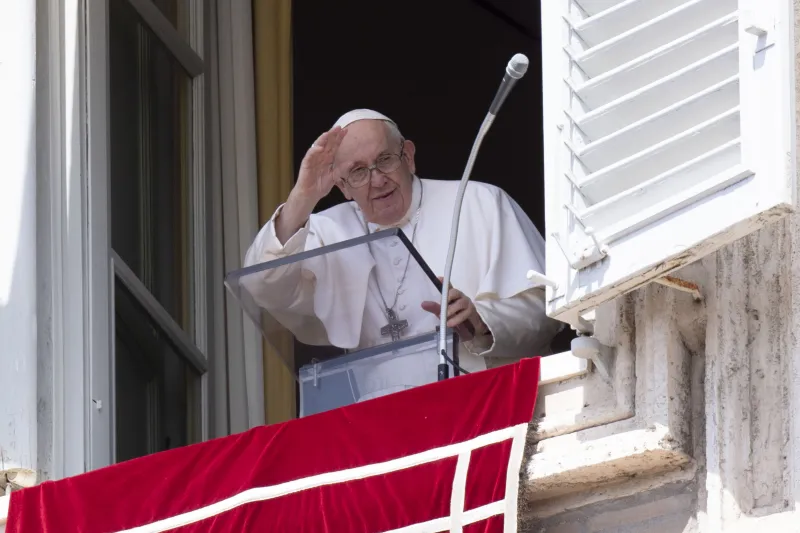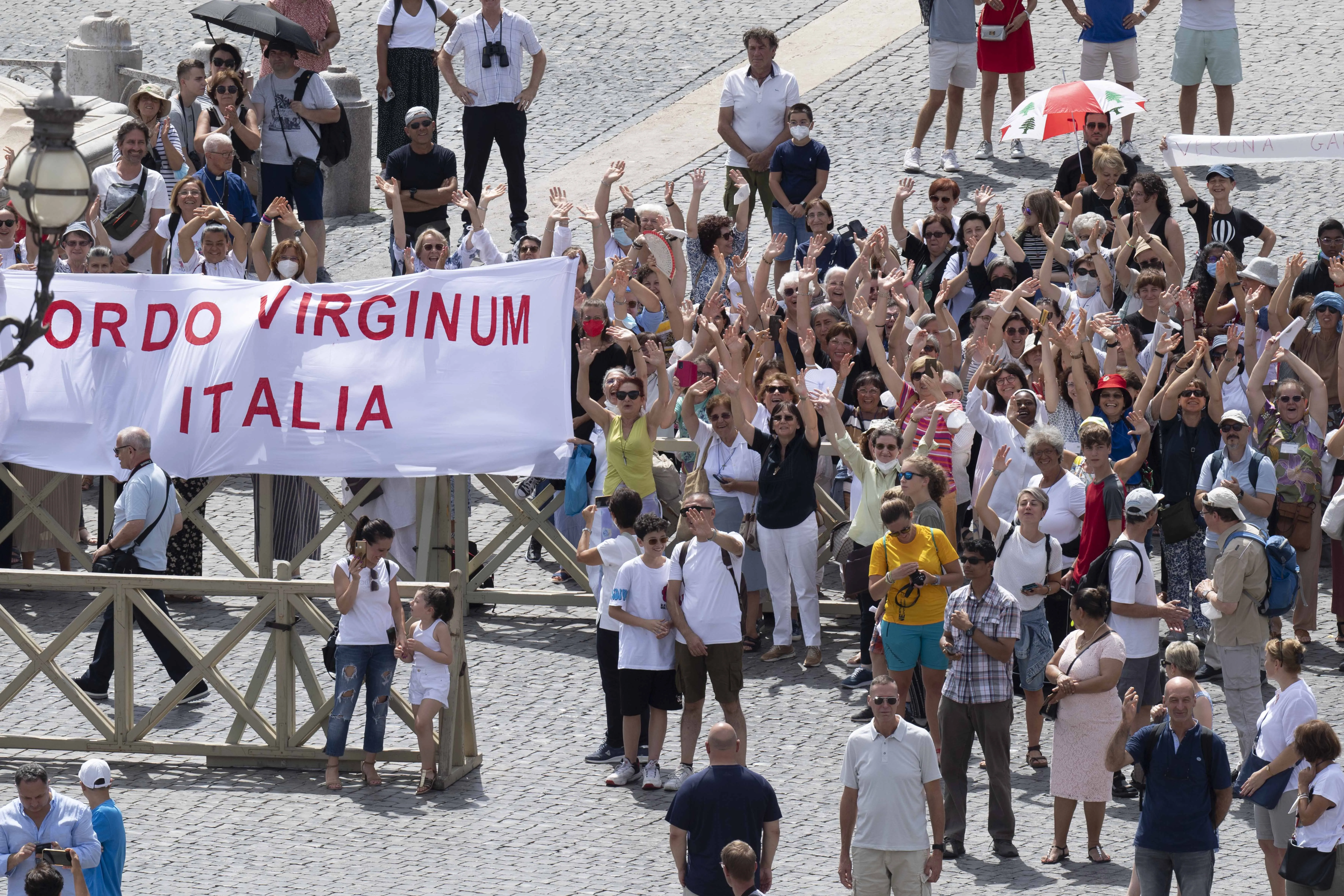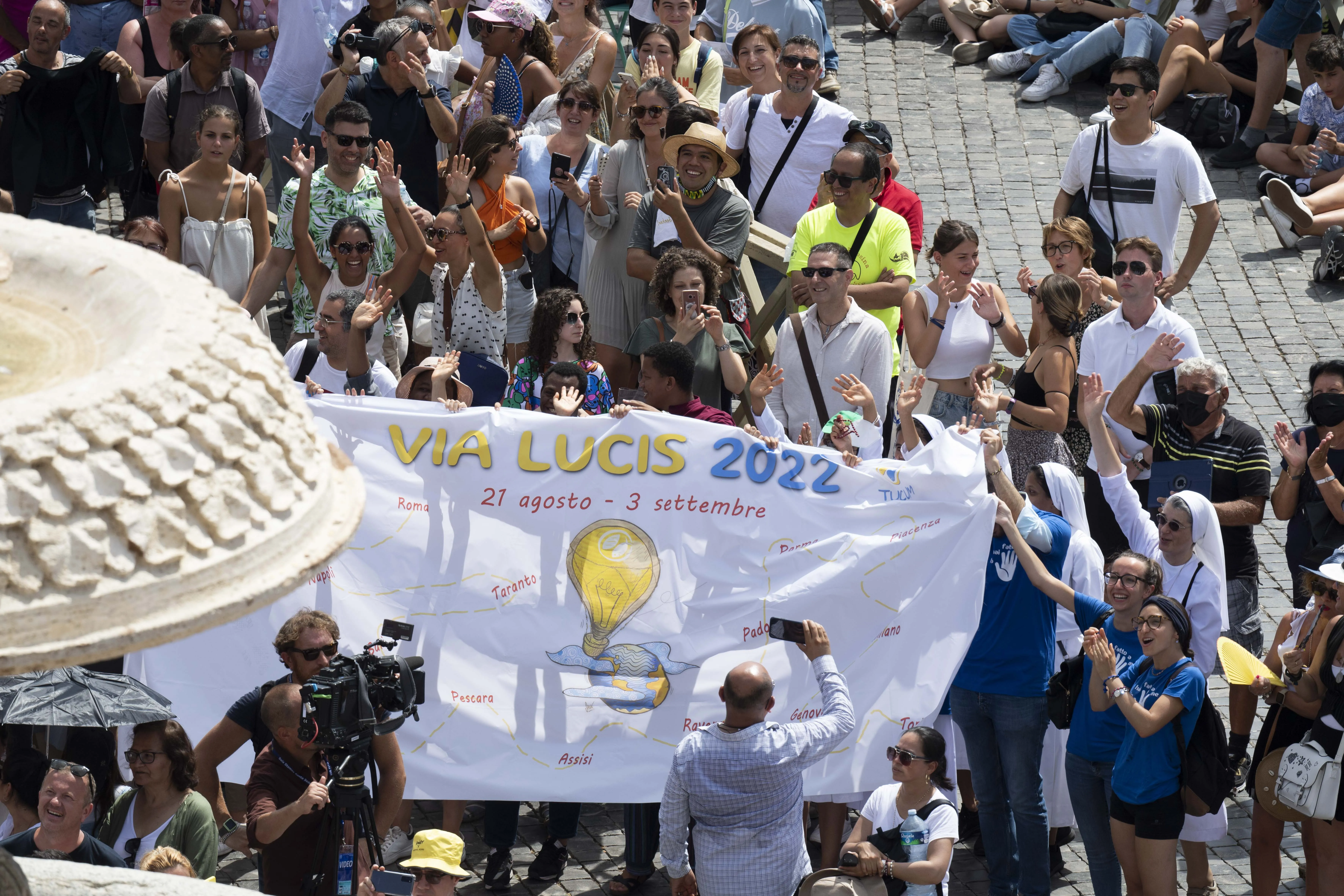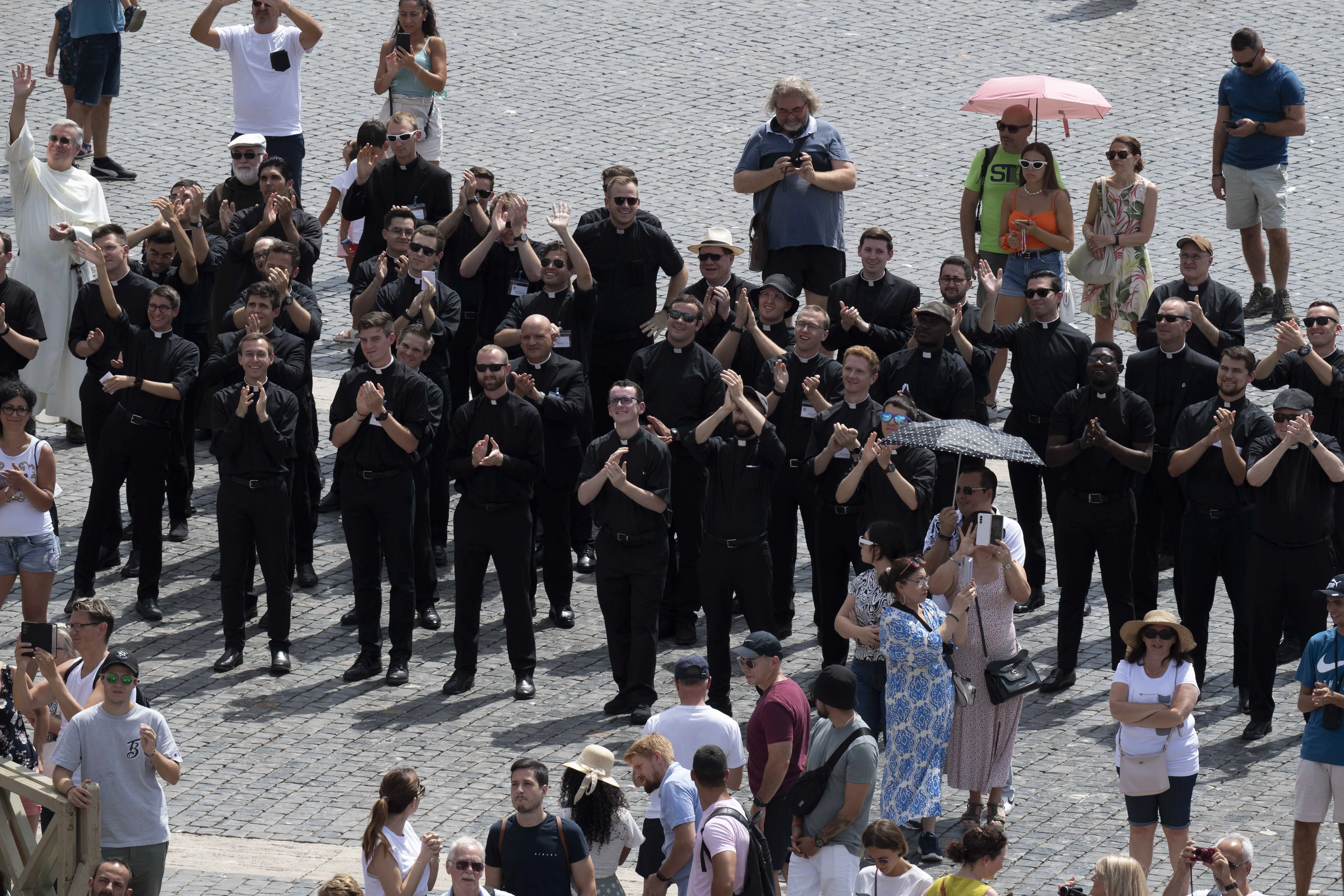
Vatican City, Aug 21, 2022 / 07:30 am (CNA).
Christians are measured by how well they follow Jesus Christ and the Gospel, not by their own ideas and self-sufficiency, Pope Francis said on Sunday.
In his Angelus message Aug. 21, the pope reflected on Jesus’ words as recounted in the Gospel of Luke, chapter 13: “Strive to enter through the narrow gate, for many, I tell you, will attempt to enter but will not be strong enough.”
“The Christian gate is a life whose ‘measure is Christ,’ founded and modeled on him,” Francis said. “This means that the rule of measure is Jesus and his Gospel — not what we think, but what he says to us.”
In his address before the Angelus, a traditional Marian prayer, Pope Francis also pointed to Jesus’ teaching in John 10:9: “I am the gate. Whoever enters through me will be saved, and will come in and go out and find pasture.”
Jesus, the pope said, “wants to tell us that to enter into God’s life, into salvation, we need to pass through him, not through another one, through him; to welcome him and his Word.”

The pope’s weekly message was delivered from a window overlooking St. Peter’s Square, where about 12,000 people had gathered, according to the Vatican gendarmes.
The day’s Gospel describes a “narrow gate,” Francis said, “not because only a few are destined to go through it, no, but because to belong to Christ means to follow him, to live one’s life in love, in service, and in giving oneself as he did, who passed through the narrow door of the cross.”
To do this requires less egoism, reducing our presumption of self-sufficiency, lowering our pride and arrogance, and overcoming laziness, he said.
This, he noted, is how Christians can “traverse the risk of love, even when it involves the cross.”
Pope Francis described some of the concrete times people may struggle to choose “daily acts of love:” such as “parents who dedicate themselves to their children, making sacrifices and renouncing time for themselves” or people who serve the elderly, the poor, and the vulnerable.

He also spotlighted the sacrifices of those who serve others without concern for their own interests, those who put up with discomfort, or even misunderstanding.
“Let’s think,” he said, “of those who suffer because of their faith, but who continue to pray and love; let’s think of those who, rather than following their own instincts, respond to evil with good, finding the strength to forgive and the courage to begin again.”
These area examples of people “who do not choose the wide door of their own convenience, but the narrow gate of Jesus, of a life spent in loving,” the pope said, as he encouraged people to consider what side they want to be on.
“Do we prefer the easy way of thinking only about ourselves, or do we choose the narrow gate of the Gospel that puts our selfishness into crisis, but which makes us able to welcome the true life that comes from God and makes us happy?” he said, posing the question for self-reflection.
Francis said: “May Our Lady, who followed Jesus all the way to the cross, help us to measure our life with him so as to enter into the fullness of eternal life.”
After the Angelus, Pope Francis commented on the situation in Nicaragua, where the Ortega dictatorship is harassing the Catholic Church.

He also greeted various groups in St. Peter’s Square, including the new students of the Pontifical North American College (NAC), the American seminary in Rome.
“In particular, I greet the Pontifical North American College, especially the new seminarians, just arrived, and I urge them to spiritual commitment and faithfulness to the Gospel and to the Church,” Pope Francis said.
The NAC’s Class of 2026 arrived in Rome Aug. 19.
The Class of 2026 has arrived! After a long flight from the US, the “New Men” shared a meal, toured campus, prayed…
Posted by Pontifical North American College on Friday, August 19, 2022
If you value the news and views Catholic World Report provides, please consider donating to support our efforts. Your contribution will help us continue to make CWR available to all readers worldwide for free, without a subscription. Thank you for your generosity!
Click here for more information on donating to CWR. Click here to sign up for our newsletter.





Yes. Francis is absolutely correct. Christ, his Gospel is the rule by which our faith and actions are measured. The narrow gate of the cross, the only entrance into the Kingdom.
Perhaps the best Angelus. Would that this Rule were exacted in our faith and actions. And in context of all else that transpires within Francis’ pontificate. This theology of Francis welcome indeed though questionable in its application. By inference of the Angelus proposition rules, those that are drawn from the first principle, Christ, possessing Apostolic permanence are so roundly disparaged by the Holy Father.
For example, it’s reason that measures the permanence of rules, the commandments of repentance, of a holy life required to walk the narrow, rough path as distinguished from the wider path so easily and happily followed by so many. Few take the rigid, demanding narrow path of repentance, suffering, and mediation for sinners. Looming paradoxically is the great Synodal journey, discursive, searching.
For a genuine believer Christ continues to be the Alpha and Omega in one’s life.